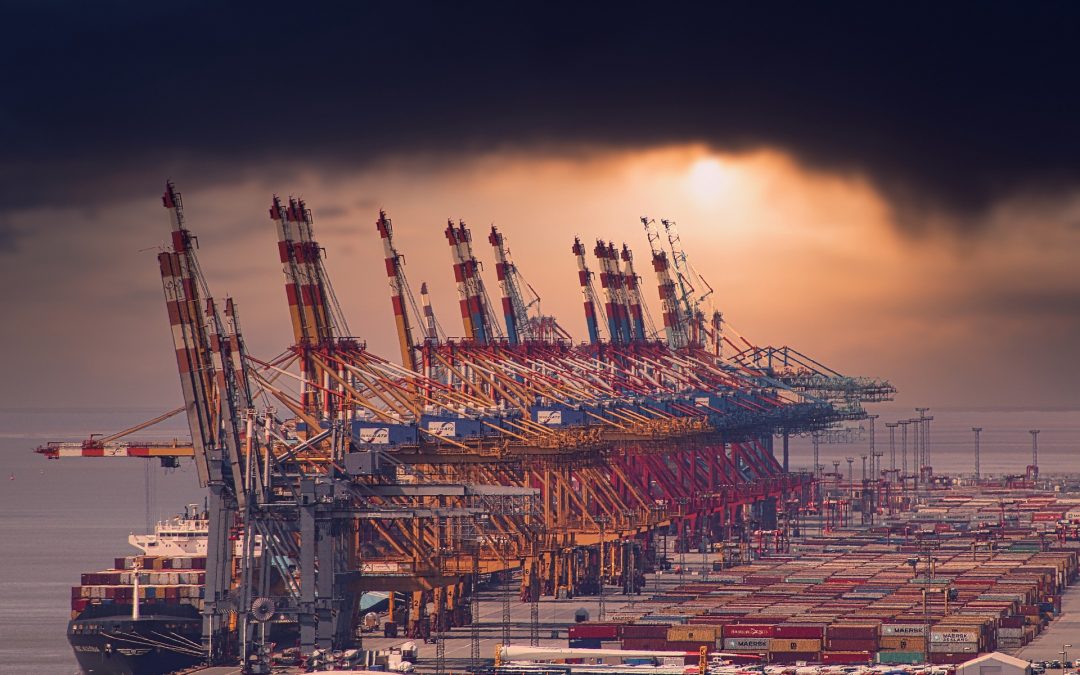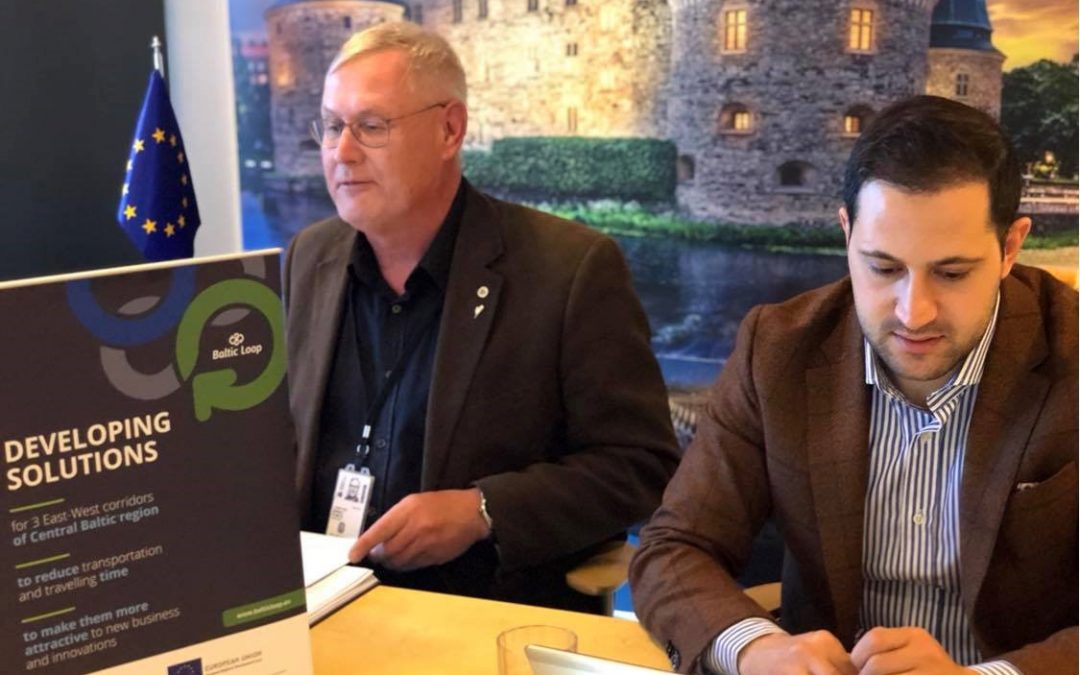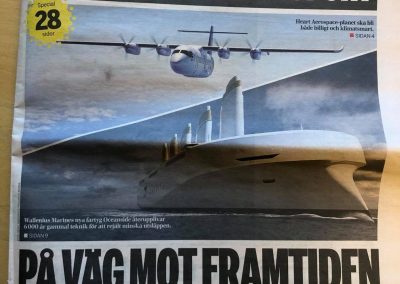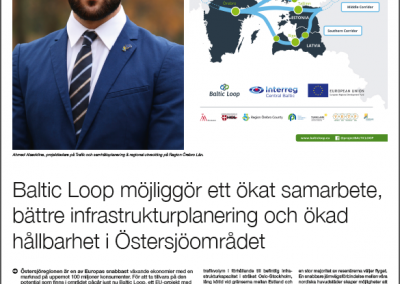
by Ahmed Alaeddine | Jun 21, 2021 | News
Within the framework of the EU project Baltic Loop, Region Örebro County has mapped and analysed various digital and automated working methods that could contribute to shorter travel times in public transport. A number of different nodes, both along the railway and with other public transport, in Sweden, Finland, Estonia and Latvia have been analysed from a travel time perspective. Current train planning processes and railway operations in the four countries have been analysed to get an idea of how much extra time is applied in timetable construction, and whether this time could be removed by applying one or several of the digital and automated working methods that have been mapped.
Of the countries studied, practice regarding timetable construction looks to some extent different. In Estonia and Latvia, there are few public documents showing the regulated practice of timetable construction. The report shows that both Sweden and Finland have regulations regarding extra redundancy in timetable construction. The supplement for redundancy is calculated differently, and is therefore difficult to compare, but based on the primary nodes in Sweden and Finland, it has been concluded that Finland has more redundancy than Sweden per travel minute.
- As Sweden and Finland provide more open data than Estonia and Latvia, the descriptions of Sweden’s and Finland’s railway network are more detailed than the descriptions of Estonia’s and Latvia’s railway network, says Ahmed Alaeddine, project manager at Region Örebro County.
Investment in infrastructure and maintenance on the railway are necessary for reduced travel times
There are a number of driver support systems on the market that could reduce travel time in public transport, as traffic can be planned more frequently through more detailed driving information for train drivers. In the case of timetable construction, a simulator could possibly be used to find efficiency possibilities in travel time.
It would also be possible to reduce travel time through a number of measures that do not require digital aids – however, these measures come with certain consequences that need to be considered. Most of the redundancy in the timetable is intended to compensate for quality deficiencies in the railway system. By reducing margins without investing in the railway system, there is a risk of increased disturbance sensitivity.
>> Full text version of the research paper available Here

by Ahmed Alaeddine | Nov 26, 2020 | News
The newspaper Dagens Industri (Sweden) has written an article about the Baltic Loop project. Dagens Industri interviewed the Swedish project manager Ahmed Alaeddine who talks about the project and how the project has identified bottlenecks in the transport system and how it enables increased cooperation, better infrastructure planning and increased sustainability in the Baltic Sea area.
“The project started in 2019 and will run until 2021, but already now we have been able to identify certain bottlenecks such as high traffic volume in relation to existing infrastructure capacity in the Oslo-Stockholm route, long queues at the borders between Estonia-Latvia and Latvia-Russia. There are also bottlenecks at the ports in the Baltic Sea area, where they are increasingly forced to adapt their operations and geographical scope in relation to growing large cities, where the consequence is that port areas have less land available. ”
Ahmed Alaeddine mentions in the article that it must be smooth and easy to transport between the Baltic Sea countries for business transport, labour, students and leisure travellers. One way to get there is to accelerate the planning and expansion of infrastructure both nationally but also across national borders, where the connection between Oslo-Stockholm is a clear example. Other important infrastructure investments include a faster railway connection between Turku-Helsinki and the new establishment of the Port of Norrvik.

by Ahmed Alaeddine | May 22, 2020 | News
In the framework of the Baltic Loop project, Ahmed Alaeddine and Fredrik Idevall participated in the conference TRANSESTONIA. The main goal of the conference is to discuss and reach agreements on further transport development between China and Sweden via Kazakhstan, Russia, and Estonia. Delegates from all countries were represented.
Since ancient times, Estonia has been an important gateway between the Nordic countries in Scandinavia and the east. The Baltic countries are the beginning of the eastern trade route that connected to the Silk Road in Persia. There are again thoughts on using this old trade route. Modern rail systems with train commutes provide fast, reliable, and safe transport.
Today,
there are a number of train commutes between China and Sweden. The usual
transport arrangement is via shipping where the port of Gothenburg receives the
goods, which then continues on land by road or rail. Another arrangement is that
transport from China is unloaded in one of Europe’s major ports to continue the
road to Sweden.
What TRANSESTONIA wants to achieve is that the goods are transported by rail between the countries of China, Kazakhstan, Russia, Estonia, and then via sea to Sweden. There are major temporal and environmental benefits to working for a transfer from shipping and aviation to rail. Today it takes about 12 days to transport goods from China to Sweden by train, while the figure for sea shipping is 40 days, says Ahmed Alaeddine, one of the project managers of the EU project Baltic Loop.
Maritime transport is by far the most dominant mode of transport for goods between China and Europe. The share of maritime transport amounts to as much as 94% compared with the railway’s market share of only 1%.
The railway has a huge potential to take market shares from maritime transport. It is both a faster and more sustainable mode of transport. One explanation for the low market share is that China has not previously marketed and subsidized rail traffic, says Ahmed Alaeddine.
The region of Örebro County is following with interest the work of improving the railroad between the countries from Sweden to China. The development of an improved railway between these countries is good for the Baltic countries such as Estonia, Latvia, Lithuania, and Scandinavian countries such as Sweden, Finland, and Norway as the conditions for the exchange of goods become simpler and faster while we make a greener transition. The problem now is to be able to fill the train carts that are going back to China with export goods.
Sweden imports more from China than we export. We need a balanced exchange trade between the countries in order to achieve filled train carriages in both directions and that the region’s companies choose the train as a mode of transport. Today, about 30 percent of the wagons from Europe go back empty to China. A more balanced trade is a way to further improve the conditions for good rail traffic, says project manager Ahmed Alaeddine.
Train
commutes between Europe and Asia are becoming more and more a reality. It is
now up to the Swedish business community to make the best use of this
opportunity.






